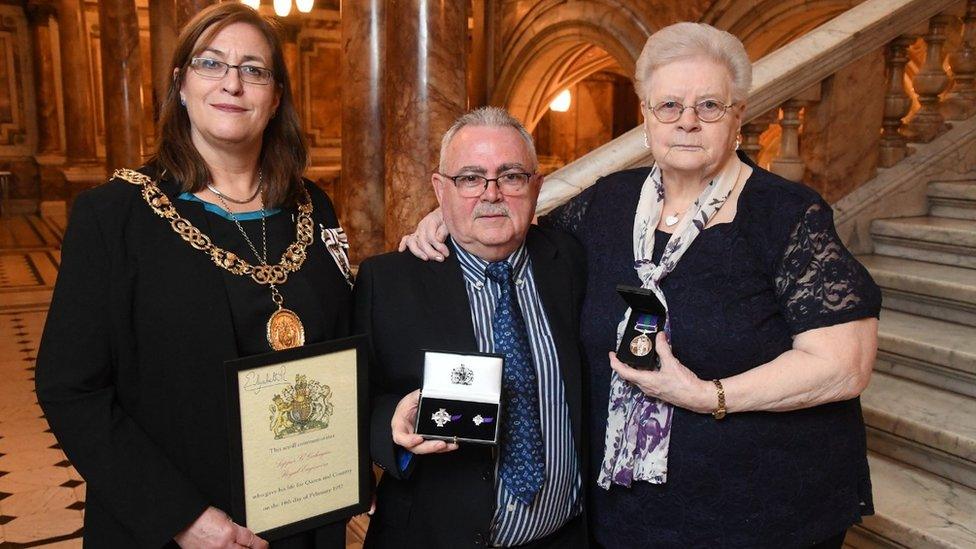Honour for soldier killed in Cyprus
- Published

Lord Provost Eva Bolander presented the medal to Sapper Gahagan's brother, Frank, and sister, Nan
The brother of a Glaswegian soldier killed in Cyprus 60 years ago has been presented with the Elizabeth Cross by the Lord Provost.
Frank Gahagan was only five years old when Sapper George Gahagan was critically injured by accidental fire.
George was just 21 years old and had served less than a year in the army when he lost his life.
Frank, 66, said: "It's very emotional. This means everything to me."
The pensioner expressed his sadness that his late parents, Isabella and George, never lived to see the presentation.
He said: "His death devastated my mum. She never really recovered.
"My dad was shattered. We didn't talk about him much."
George's sister Nan, 80, also attended the ceremony at Glasgow City Chambers.

The Elizabeth Cross was presented to Sapper Gahagan's family
George, was born in Partick on 25 April 1935, the eldest of nine children, and was called up for National Service in June 1956.
He joined the Royal Engineers and was posted to Cyprus as part of the Middle East Land Forces.
While on the island he learned to drive and was assigned to 37 Field Engineer Regiment.
But on 14 February 1957 Spr Gahagan - who had only served 239 days in the Army - was accidently shot and killed.
He is buried at Wayne's Keep, the British Military Cemetery in Cyprus.
National recognition
The Lord Provost Eva Bolander said: "It's important that families receive recognition of their loved one's service.
"Conflict visits great costs on everyone who loses a member of their family.
"It's my honour and pleasure to be able to present the Elizabeth Cross.
"I know it's a source of great pride and comfort to those left behind."
The Elizabeth Cross was created to provide national recognition for the families of armed forces personnel who have died on operations or as a result of an act of terrorism.
It is not a posthumous medal for the fallen but an emblem demonstrating tangible national recognition for service families of their loss.